Transplant Your Leeks Like This To Get Them Off To The Best Possible Start
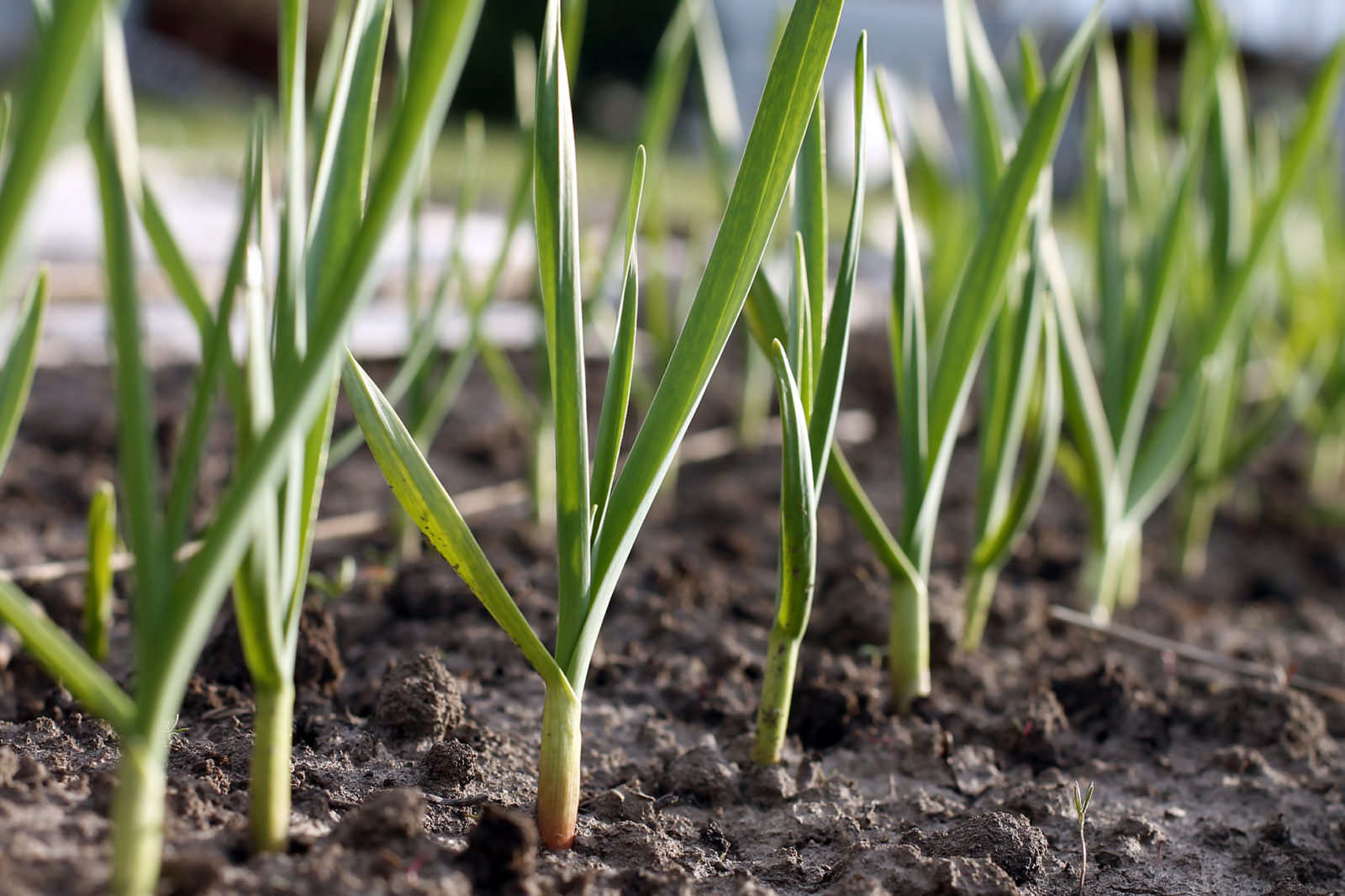
VEGETABLES > LEEKS > TRANSPLANTING

Elizabeth is a Permaculture Garden Designer, Sustainability Consultant and Professional Writer, working as an advocate for positive change. She graduated from the University of St. Andrews with an MA in English and Philosophy and obtained a Diploma in Applied Permaculture Design from the Permaculture Association.
Reviewed By COLIN SKELLY

Colin is a Horticulturist and Horticultural Consultant with experience in a range of practical and managerial roles across heritage, commercial and public horticulture. He holds the Royal Horticultural Society’s Master of Horticulture award and has a particular interest in horticultural ecology and naturalistic planting for habitat and climate resilience.
IN THIS GUIDE
LEEK GUIDES
Companion Plants
Growing From Seed
Harvesting
Transplanting
Winter Growing
Whether you purchase young plants or grow your own from seed, one important thing to understand about leeks is how to transplant them into their final growing positions in your garden.
Getting things right when it comes to transplanting leeks is important because it ensures that the leeks get off to the best possible start, which makes it more likely that you will obtain a good harvest of well-sized veg later in the year.
Leeks are transplanted into a garden between April and June.

When exactly you will transplant leeks into their final growing positions will depend on when and where they were sown, and, of course, on the conditions where you live.
To transplant leeks:
- Prepare your growing area in a position that gets plenty of sun.
- Use a wooden handle or stick to make planting holes wider than the young leek plants.
- Lower one leek at a time into each of these holes.
- Water well so the holes fill back in with soil.
- Add an organic mulch around your plants.
- Consider adding cover such as netting to protect your plants while they are small.
| Difficulty | Easy |
| Equipment Required | Wood handle or stick, cover |
1) Prepare Your Growing Area
Leeks like a position in full sun, with a moist yet free-draining, rich and fertile growing medium enriched with plenty of organic matter.
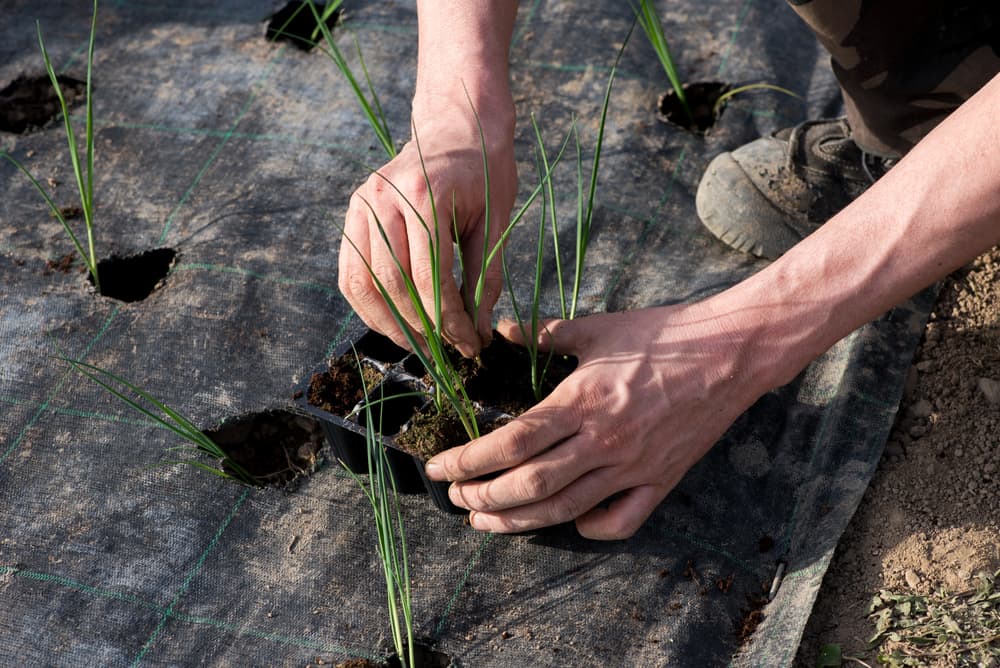
Make sure that you prepare the vegetable patch, raised bed or deep container for your leeks so that they provide these conditions before you begin the transplantation process.
2) Make Planting Holes
Using a wooden handle or a stick of a similar width, make holes in your prepared growing area to provide spaces for your young leeks to be planted.
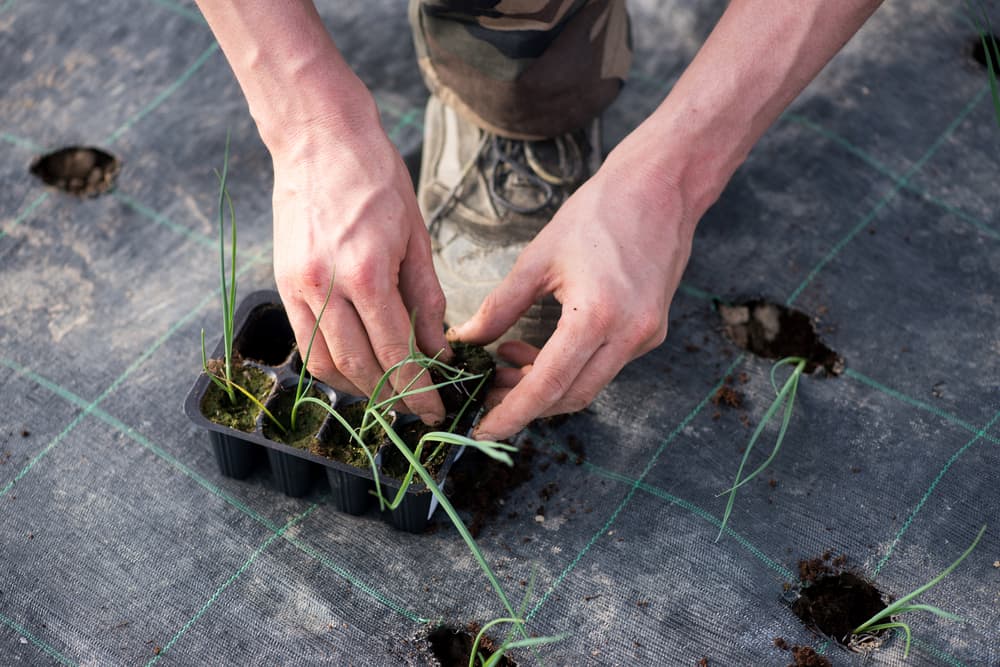
This method helps ensure that your leeks can expand, as they should widen up ready for harvesting later in the year.
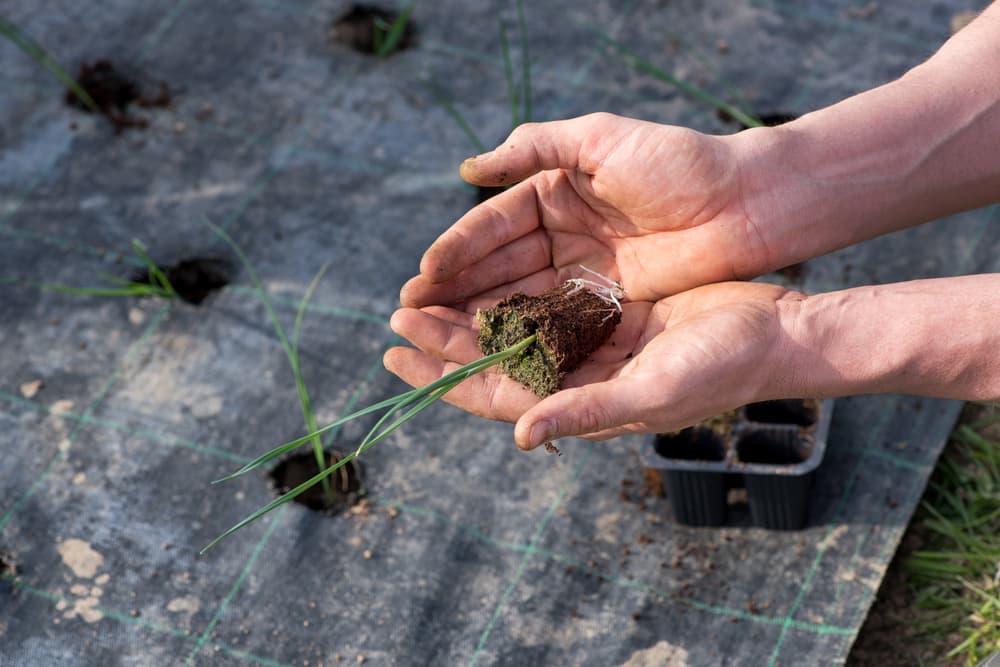
The holes should be around 15-20cm deep and 15cm apart, though you can space leeks more closely if you want to harvest them as baby leeks while they are still relatively small.
3) Lower Into Holes
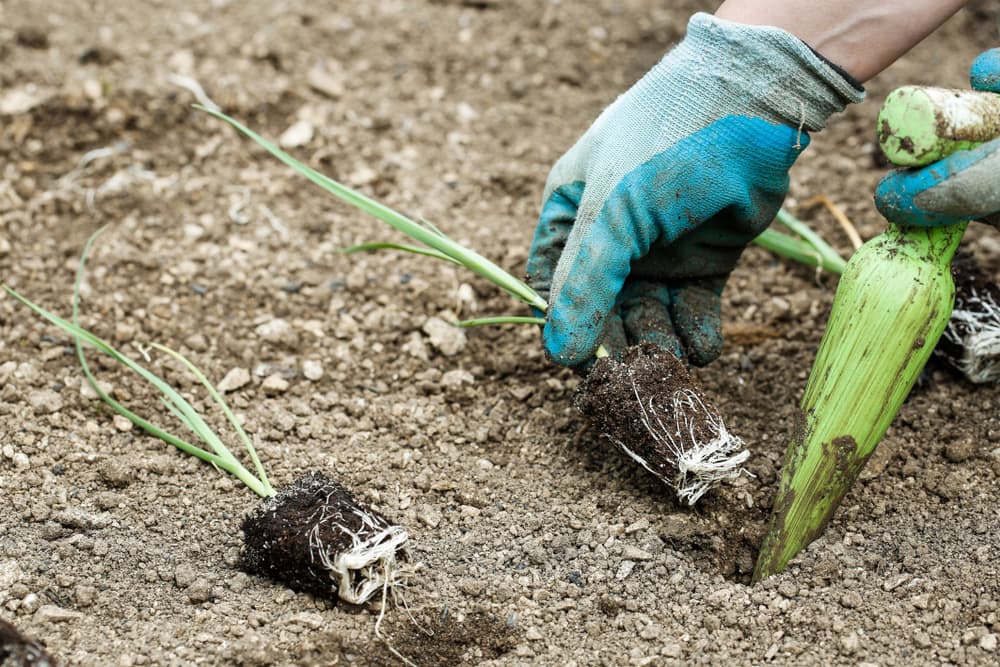
Once you have made your holes, lower one of your young leeks into one, making sure that the roots are down in the base of the hole by moving your hand with a slight twisting motion.
4) Water In Well
Carefully making sure that you do not wash the tops of the young leeks below the soil, water the plants in well, filling each hole with water.
Done correctly, the holes should refill with soil and hold your young leeks gently in position.
5) Add Organic Mulch
To maintain fertility in your growing area, it is a good idea to add a mulch of homemade compost or another fine organic material around your leeks.
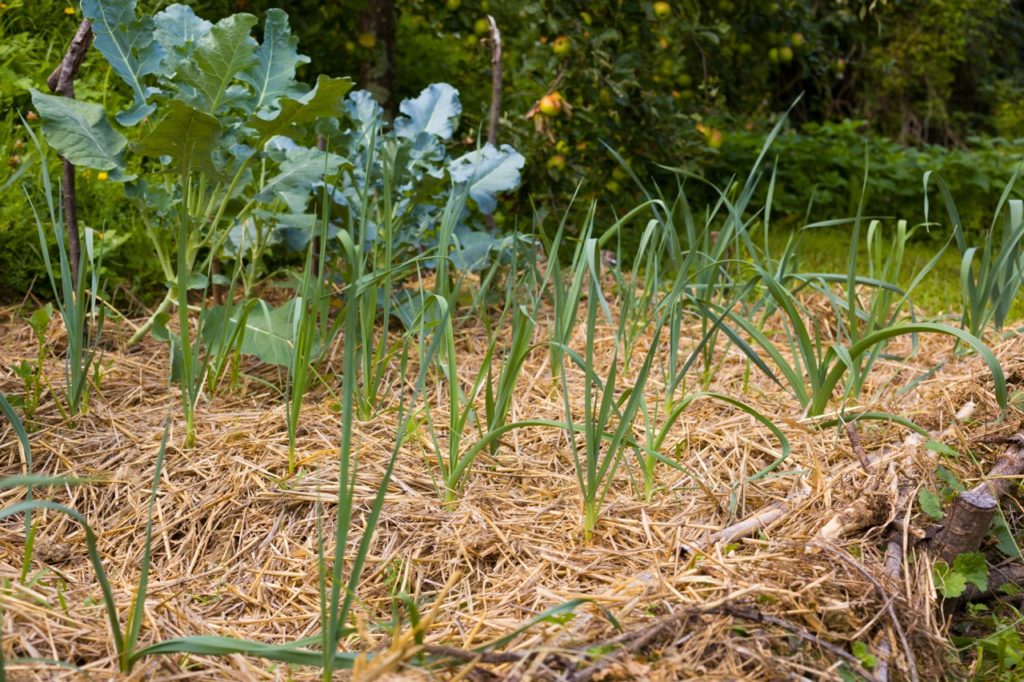
The mulch will also help conserve soil moisture and suppress weeds.
6) Consider Protection
Birds and other creatures can sometimes peck or uproot young leek plants from the ground.
So, if this is a problem where you live, you might like to cover your leeks with cloches, row covers, netting or some other form of protection.
“When my leeks first go into the ground, I do find that the odd one gets pulled out by birds,” shares Colin Skelly, a Master Horticulturist.
“However, I don’t find that netting is worthwhile because the birds don’t tend to persist and, at this stage, you can just pop the leeks back in the ground.
“If it was more of a problem, I would use netting, but it would come off as soon as the leeks were sufficiently rooted.”
